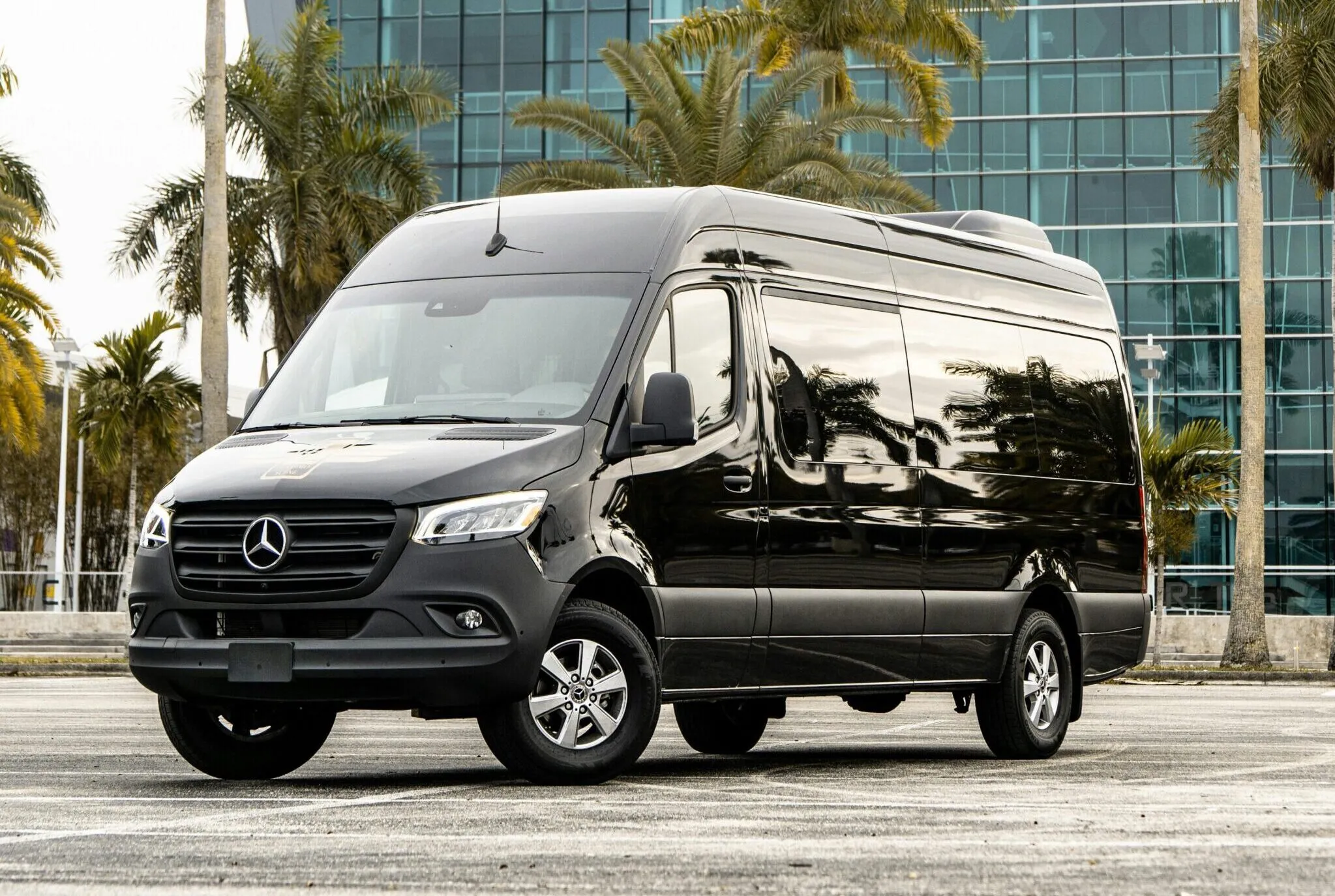Remember the last time you were crammed onto a slow-moving bus, inching through rush hour traffic? The frustration of a delayed commute is a reality for millions of city dwellers worldwide. But what if there was a better way? Enter the world of fast buses, a revolutionary approach to public transportation that’s transforming commutes and cityscapes.
Fast buses, also known as Bus Rapid Transit (BRT), are designed to be quicker and more efficient than traditional buses. Imagine dedicated lanes that keep fast buses zipping past congested traffic, making fewer stops at strategically placed stations. The result? Shorter commutes, happier riders, and a city that breathes a little easier.
How Do Fast Buses Achieve Lightning Speed?
Fast buses employ a multi-pronged approach to shave precious minutes off your journey. Here’s the secret sauce:
Limited Stops: Unlike regular buses that stop at every corner, fast buses make strategic stops at stations with convenient amenities (think restrooms and Wi-Fi!). This reduces boarding and disembarking times, keeping the bus moving at a steady clip.
Dedicated Bus Lanes: Imagine a lane reserved exclusively for fast buses, allowing them to bypass traffic jams. This not only benefits bus riders but also helps regulate traffic flow for everyone on the road.
Modern Technology: Many systems utilize advanced technology like traffic signal prioritization, where traffic lights adjust timings to keep the bus on schedule. Additionally, newer bus models with improved acceleration and braking contribute to faster travel times.
But Wait, There’s More! The Benefits of Fast Buses
Fast buses offer a multitude of advantages beyond just speed. Let’s explore some key benefits:
Reduced Traffic Congestion: By encouraging people to ditch their cars for fast and reliable public transport, fast buses can significantly decrease the number of vehicles on the road, leading to smoother traffic flow for everyone.
Environmental Benefits: Faster commutes translate to less time spent idling in traffic, which means fewer harmful emissions released into the atmosphere. Fast buses contribute to a cleaner and more sustainable city environment.
Increased Ridership: The efficiency and convenience of fast buses make them a more attractive public transport option. This translates to increased ridership, further reducing reliance on personal vehicles and their environmental impact.
Economic Boost: Efficient public transport like fast buses can revitalize local businesses. Stations often become hubs for activity, attracting cafes, shops, and other establishments that cater to commuters.
Real-World Examples: Making a Difference
The success of fast bus systems is evident around the world. Here are two shining examples:
Curitiba, Brazil: Pioneering the BRT concept in the 1970s, Curitiba boasts a system that has transformed the city. Dedicated lanes, frequent headways, and integrated planning have resulted in a significant decrease in travel times and air pollution.
Brisbane, Australia: The Brisbane Metro is a prime example of a modern fast bus system. Utilizing high-capacity vehicles, separated lanes, and innovative station designs, the Metro has significantly reduced travel times and increased ridership, proving its impact on a global scale.
The Future of Fast Buses: Gearing Up for Change
Fast buses are not a passing fad. Their popularity is rapidly increasing, with cities worldwide embracing them as a key component of sustainable urban development. Technological advancements like autonomous vehicles and smart traffic management systems hold even greater promise for the future of fast buses, further optimizing efficiency and convenience.
The Takeaway: Fast Buses are the Future of Urban Mobility
Fast buses present a compelling solution to the ever-growing challenges of urban transportation. They offer faster commutes, cleaner air, and a more vibrant city environment. As we move towards a future focused on sustainability and efficiency, fast buses are poised to play a pivotal role in shaping the way we travel and experience our cities.
Ready to join the fast lane? Advocate for fast bus initiatives in your city. Together, let’s pave the way for a future where getting around is a breeze!

Fast Buses: Ditch the Gridlock, Embrace the Speed
Imagine this: You’re running late for work, crammed into a bus that seems to be stopping at every single light. The frustration is real, and it’s a scenario millions of city dwellers face daily. But what if there was a way to reclaim your time and transform your commute? Enter the exciting world of fast buses, a game-changer in public transportation.
Fast Buses: Speed Demons Disguised as Public Transit
Fast buses, also known as Bus Rapid Transit (BRT), are specifically designed to offer significantly quicker travel times compared to traditional buses. While the concept might seem simple, the execution involves a clever combination of strategies.
The Secret Sauce of Fast Bus Speed
Strategic Stops, Not Every Corner: Unlike their regular counterparts that make frequent stops, fast buses focus on efficiency. They strategically stop at designated stations, often equipped with amenities like restrooms, ticket vending machines, and even Wi-Fi . This streamlined boarding and disembarking process keeps the bus moving at a steady pace, minimizing delays.
Dedicated Lanes: Bypassing the Traffic Jam Blues: Picture a lane reserved exclusively for fast buses, a magical pathway that whisks them past congested traffic. This dream becomes reality with dedicated bus lanes. By separating fast buses from regular traffic, cities significantly reduce travel times and ensure a smoother journey for riders .
Modern Muscle: Technology Under the Hood: Many fast bus systems leverage cutting-edge technology to further enhance speed and efficiency. Traffic signal prioritization allows buses to “talk” to traffic lights, adjusting timings to keep them moving on schedule. Additionally, newer bus models with improved acceleration and braking capabilities contribute to faster travel times.
Fast Buses Come in Different Flavors
The world of fast buses isn’t a one-size-fits-all scenario. Let’s explore some popular variations:
BRT (Bus Rapid Transit): The OG of fast buses, BRT systems typically utilize dedicated lanes, strategically placed stations, and a high frequency of buses. They offer a cost-effective and efficient way to improve public transportation in cities.
Light Rail: Often confused with fast buses, light rail utilizes sleek, tram-like vehicles that travel on dedicated tracks, either underground or at street level. While offering similar benefits to BRT systems, light rail requires a more significant upfront investment due to the infrastructure involved.
Express Buses: These long-distance fast buses connect suburbs or outlying areas to city centers, offering limited stops for a quicker journey. They are a great option for commuters who travel longer distances.
Fast Buses: Beyond Just Speed
The allure of fast buses goes beyond simply shaving minutes off your commute. These innovative systems offer a multitude of benefits for both riders and cities:
Reduced Traffic Congestion: By encouraging people to ditch their cars and opt for the convenience of fast buses, these systems can significantly decrease the number of vehicles on the road. This translates to smoother traffic flow for everyone, not just bus riders.
Environmental Champions: Faster commutes mean less time spent idling in traffic, resulting in a reduction of harmful emissions released into the atmosphere. Fast buses contribute to cleaner air and a more sustainable city environment.
Ridership on the Rise: The efficiency, reliability, and convenience of buses make them a highly attractive public transport option. This rise in ridership further reduces reliance on personal vehicles, contributing to a greener city.
Economic Boost for Local Businesses: Fast bus stations often become hubs for activity, attracting cafes, shops, and other establishments that cater to the influx of commuters. This revitalizes local businesses and creates a more vibrant urban landscape.
Remember, the next time you see a fast bus whizzing past congested traffic, remember – it’s not just a bus; it’s a symbol of a more efficient, sustainable, and ultimately, livable city.

Fast Buses: Your Ticket to a Faster, Greener, and More Connected City
Imagine this: You ditch the stress of rush hour traffic and arrive at your destination feeling refreshed and ready to tackle the day. Sounds like a fantasy, right? Not anymore! Fast buses, the dynamic duo of speed and efficiency, are revolutionizing public transportation, offering a multitude of benefits that go far beyond just shaving minutes off your commute.
Fast Forward Your Commute: Time Saved is Time Gained
One of the most enticing advantages of buses is the significant reduction in travel time. Forget the frustration of crawling through traffic in a slow-moving bus. Fast buses, with their strategic stops, dedicated lanes, and modern technology, can significantly outperform their regular counterparts. Studies by the Institute for Transportation & Development Policy (https://www.itdp.org/) show that BRT systems can reduce travel times by an average of 30% compared to regular buses. That translates to precious minutes you can reclaim for yourself, whether it’s spending more time with loved ones, catching up on work, or finally grabbing that morning cup of coffee in peace.
Goodbye Gridlock, Hello Smooth Sailing
Fast buses aren’t just a boon for riders; they play a crucial role in easing traffic congestion for everyone. By encouraging people to leave their cars behind and opt for fast and reliable public transport, these systems lead to a significant decrease in the number of vehicles on the road. This translates to smoother traffic flow for everyone, including cyclists, pedestrians, and even drivers who choose to keep their cars. A study by the World Resources Institute (https://www.wri.org/cities/urban-mobility) highlights how BRT systems can contribute to a 10-20% reduction in overall traffic congestion in cities.
Breathe Easy: Fast Buses for a Cleaner City
Fast buses are champions of environmental sustainability. With faster commutes and reduced idling times, they significantly decrease harmful emissions released into the atmosphere. This translates to cleaner air, especially in urban areas where pollution levels can be a major concern. A report by the International Energy Agency (https://www.iea.org/) states that widespread adoption of BRT systems can lead to a reduction in greenhouse gas emissions by up to 30% in the public transport sector. In today’s world, where tackling climate change is a top priority, buses offer a powerful solution for a cleaner and healthier future.
More Riders, More Benefits: The Rise of Public Transport
The efficiency and reliability of fast buses make them a highly attractive and appealing public transport option. This translates to a rise in ridership, which has a domino effect of positive consequences. With more people opting for buses, reliance on personal vehicles decreases, further reducing traffic congestion and emissions. Additionally, increased ridership strengthens the public transport system, encouraging further investment and development in this environmentally friendly mode of transportation.
Boosting Local Businesses: Fast Buses Drive Economic Growth
Fast buses aren’t just about getting from point A to point B; they act as catalysts for economic activity. Stations along bus routes often become hubs for activity, attracting cafes, shops, and other establishments that cater to the influx of commuters. This revitalizes local businesses, creates jobs, and fosters a more vibrant and connected urban environment. A study by the Federal Transit Administration (https://www.transit.dot.gov/) in the United States found that BRT systems can generate up to $5 in economic benefits for every $1 invested.
Fast Buses: Paving the Way for a Brighter Future
Fast buses are more than just a faster way to get around; they represent a paradigm shift in urban mobility. Their impact extends far beyond individual commutes, fostering a more environmentally sustainable, economically vibrant, and ultimately, livable city for all. So, the next time you see a bus zip past congested traffic, remember – it’s not just a vehicle; it’s a symbol of a smarter, greener, and more connected future.
Urban Caffeine
Fast Buses Around the World: Speeding Towards a Brighter Future
Fast buses are no longer a futuristic vision; they’re transforming cities across the globe. But how do these systems translate from theory to reality? Let’s explore some real-world examples that showcase the power of fast buses:
Curitiba, Brazil: The Pioneering Spirit of BRT
Curitiba, a city in southern Brazil, is a true pioneer in the world of buses. Back in the 1970s, facing a transportation crisis, Curitiba embarked on a bold experiment – implementing one of the first BRT systems in the world. Their system, known as “Rede Integrada de Transporte” (Integrated Transport Network), boasts dedicated bus lanes, strategically placed stations, and a fleet of modern buses. The impact? Travel times were slashed by a staggering 50%, and ridership skyrocketed by over 90%. Curitiba’s success story serves as an inspiration for cities worldwide, demonstrating the transformative potential of fast buses.
Brisbane, Australia: The Cutting-Edge Metro on Wheels
Fast forward to modern times, and Brisbane, Australia, showcases the cutting-edge evolution of fast buses. The Brisbane Metro, launched in 2018, utilizes high-capacity vehicles with a sleek, tram-like design. These “Metro Moovers” glide along a dedicated busway, featuring elevated sections and separated lanes. Technology plays a key role, with intelligent traffic management systems optimizing traffic flow and prioritizing the Metro for a seamless journey. The results speak for themselves: travel times have been reduced by up to 30%, and ridership continues to climb – a testament to the system’s efficiency and appeal.
Challenges and Considerations: No System is Perfect
While fast buses offer a multitude of benefits, it’s important to acknowledge potential challenges. Initial investment costs can be high, requiring careful planning and resource allocation. Additionally, integrating bus systems into existing infrastructure can be complex, and securing public buy-in is crucial for success. However, the long-term benefits outweigh the initial hurdles, as evidenced by the success stories of Curitiba and Brisbane.
The Future of Fast Buses: Gearing Up for Innovation
The future of buses is brimming with exciting possibilities. Advancements in technology like autonomous vehicles and smart traffic management systems promise to further optimize efficiency and convenience. Additionally, the focus on sustainability will likely lead to the integration of electric or hybrid bus models, further reducing environmental impact.
Fast Buses: A Catalyst for Change
Fast buses are not just a faster way to get from point A to point B; they represent a catalyst for positive change in our cities. They pave the way for a more sustainable future, a more vibrant economy, and ultimately, a more livable urban landscape for all. So, the next time you hear the whirring of a bus, remember – it’s not just a vehicle; it’s a symbol of progress, a testament to human ingenuity, and a glimpse into a brighter future for our cities.
Ready to see fast buses take root in your city? Advocate for BRT or bus initiatives in your local government and explore resources from organizations like the Institute for Transportation & Development Policy (https://www.itdp.org/) to learn more!
Fast Buses: Cruising Towards a Smarter, Greener Urban Future
Fast buses are no longer a futuristic fantasy. They’re rapidly becoming a reality in cities worldwide, transforming the way we commute and shaping the future of urban mobility. Fueled by a growing desire for efficiency, sustainability, and a better quality of life, fast bus systems are taking center stage in urban planning initiatives across the globe.
The Global Fast Bus Phenomenon: Gaining Momentum
The popularity of buses is undeniable. Cities large and small are recognizing their potential to address pressing urban challenges. From Curitiba’s pioneering BRT system to Brisbane’s high-tech Metro, buses are proving their effectiveness in reducing congestion, improving air quality, and boosting ridership. A report by the World Bank (https://www.worldbank.org/) highlights that over 180 cities globally have implemented BRT systems, with many more exploring the possibilities. This rapid adoption signifies a global shift towards a future where buses are the norm, not the exception.
Tech-Powered Transformation: The Future of Fast Buses
The future of fast buses is brimming with exciting technological advancements poised to revolutionize the way we travel. Here are some key trends to watch:
Autonomous Vehicles: Imagine a bus system where sleek, self-driving vehicles navigate dedicated lanes with precision and efficiency. This futuristic scenario might not be as far-fetched as it seems. The integration of autonomous vehicles has the potential to further optimize speed and scheduling, creating a seamless and stress-free commuting experience.
Smart Traffic Management Systems: Technology is already playing a crucial role in optimizing fast bus operations. Smart traffic management systems can analyze real-time data to adjust traffic light timings and prioritize buses, ensuring a smooth flow of traffic. As these systems become more sophisticated, they will further enhance the efficiency and reliability of bus networks.
Data-Driven Planning: Big data analytics will play a significant role in shaping the future of buses. By analyzing ridership patterns and travel demands, cities can optimize route planning, station placement, and bus frequency, ensuring the system caters to the evolving needs of commuters.
Fast Buses: Reshaping Urban Landscapes
Fast buses aren’t just about faster commutes; they have the potential to fundamentally reshape urban landscapes. Here’s how:
Transit-Oriented Development (TOD): The rise of buses can encourage the development of TOD projects. These mixed-use developments, built around bus stations, offer housing, offices, and retail spaces within walking distance of public transport hubs. This promotes walkable, vibrant communities and reduces reliance on personal vehicles.
Revitalized Public Spaces: Fast bus stations can become vibrant hubs of activity, attracting cafes, shops, and green spaces. This not only improves the commuting experience but also fosters a sense of community and encourages social interaction.
Reduced Urban Sprawl: Efficient public transport systems like buses can discourage urban sprawl by encouraging people to live closer to city centers. This promotes denser, more sustainable urban development patterns.
Fast Buses: Paving the Way for a Brighter Future
Fast buses are more than just a mode of transportation; they represent a catalyst for positive change. They offer a glimpse into a future where cities are cleaner, more livable, and better connected. With their focus on speed, efficiency, and sustainability, fast buses are well-positioned to play a leading role in shaping the future of urban mobility. So, the next time you see a fast bus zip past congested traffic, remember – it’s not just a vehicle; it’s a symbol of a smarter, greener, and more connected future for our cities.
Fast Buses: Your Ticket to a Faster, Greener, and More Connected City (Conclusion)
Imagine a world where commutes are efficient, traffic congestion is a thing of the past, and cities breathe cleaner air. This isn’t a utopian fantasy; it’s the future buses are helping to create. These innovative public transport systems offer a multitude of benefits for both riders and cities:
Faster Commutes: Strategic stops, dedicated lanes, and modern technology all contribute to significantly reduced travel times, giving you back precious minutes in your day.
Reduced Traffic Congestion: By encouraging people to ditch their cars for fast and reliable public transport, buses can significantly decrease the number of vehicles on the road, leading to smoother traffic flow for everyone.
Cleaner Air: Faster commutes and less idling time translate to reduced emissions, creating cleaner air and a healthier environment, especially in urban areas.
Increased Ridership: The efficiency and appeal of buses lead to more people opting for public transport, further reducing reliance on personal vehicles and their environmental impact.
Economic Boost for Local Businesses: Fast bus stations become hubs for activity, attracting cafes, shops, and establishments that cater to commuters, revitalizing local businesses and fostering economic growth.
The Future is Now: Embrace Fast Buses in Your City
Fast buses are not just a passing trend; they represent a paradigm shift in urban mobility. Their impact extends far beyond individual commutes, fostering a more sustainable, economically vibrant, and ultimately, more livable city for all.
But change doesn’t happen overnight. Many cities are exploring the potential of buses, but your voice can make a difference! Here’s how you can get involved:
Educate Yourself: Learn more about bus systems and their benefits. Resources like the Institute for Transportation & Development Policy (https://www.itdp.org/) offer valuable information.
Spread the Word: Talk to friends, family, and colleagues about the advantages of fast buses. Social media can be a powerful tool to raise awareness.
Support Local Initiatives: Look for existing bus proposals or advocacy groups in your city. Lend your voice by signing petitions or attending public hearings.
Contact Your Local Representatives: Let your elected officials know you support fast bus initiatives. Your voice matters!
By taking action, you can help shape the future of your city and ensure that fast buses become a reality, paving the way for a more efficient, sustainable, and connected urban landscape. So, what are you waiting for? Embrace the bus revolution and join the movement for a brighter urban future!
By taking action, you can help shape the future of your city and ensure that fast buses become a reality, paving the way for a more efficient, sustainable, and connected urban landscape. So, what are you waiting for? Embrace the bus revolution and join the movement for a brighter urban future!


